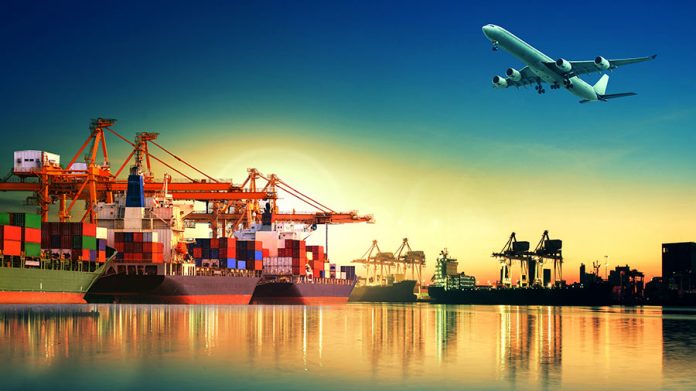Tanya Agarwal, 3rd Year B.A. LLB (Hons), Amity Law School, Delhi (GGSIPU). The following article explores the relationship of states with respect to the oceans and sea under Public International Law.
Table of Contents
Introduction
Law of the sea is also known as Maritime law which is that branch of public International Law which regulates the rights and duties concerning the regulation of states with respect to the sea. It governs the legal rules regarding ships and shipping. It is one of the principal subjects of international law and is a mixture of the treaty and established or emerging customary law.
The law of the sea forms the basis of conducting maritime economic activities, the codification of navigation rules and to protect oceans from abuse of power. It covers rights, freedoms and obligations in areas such as territorial seas and waters and the high seas, fishing, wrecks and cultural heritage, protection of the marine environment and dispute settlement.
The genesis of Law of Sea
Grotius also known as the father of modern International law, led to the formulation of maritime law which is one of the recently developed branches of International Law. During the 17th century, the doctrine of “freedom-of-the-seas” emerged wherein it was considered that the seas were free to all nations but belonged to none of them. The Law of the sea has always been in a state of flux, changing and creating a new regime as per the state’s own will.
There existed certain tension between “the free sea” and “the closed sea” which waned for centuries, generally with the powerful states arguing that the sea was free to all, and the smaller States arguing for transnational limitations on what maritime powers could do to navigate the oceans and exploit their resources.
It was during the 20th century due to vast development in the technology and the commerce department, many nations began to make jurisdictional claims so that they could protect their interest and the gradual enlargement of territorial sea initiated the need for the codification of the law to create uniformity.
Over a series of discussions and conferences, four conventions on the law of seas evolved in 1958, namely called Geneva convention on the law of sea developed but the conventions failed to address several issues like the urgent need to regulate the usage of minerals of the deep sea beds and high sea.
In 1982, the third UN conference adopted the Convention on the Law of the Sea (UNCLOS) consisting of 320 articles and 9 Annexes, along with 4 resolution. A significant portion of the convention was a replica of the old Geneva convention however several new factors were also dictated which are as follows:
- It expanded the scope regarding the matters of the new legal regime of the deep sea bed and economic zones.
- The territorial sea now extended up to 12 nautical miles limit.
- In cases of dispute, the convention provides compulsory judicial settlement at the request of one of the parties.
- The convention also describes the formation of an international tribunal of the law of the sea for helping in settlements of disputes.
- The convention also deals with the regime of archipelagic states, the waters between the islands are declared archipelagic waters, where ships of all States enjoy the right of innocent passage.
Major Maritime zones along with the rights and duties provided under the specific zones
Territorial seas
It is that part of the sea which is directly next to the coastline and bounded by the high seas. Article 2 of the Geneva Convention on the Territorial Sea and UNCLOS Article 3 both express that states exercise sovereignty over this zone subject to the provisions of the respective conventions and other rules of international law. This was intended to highlight that the limitations upon sovereignty in this area set out in the Convention are non-exhaustive. The territorial sea forms an undeniable part of the land territory to which it is bound so that a cession of land will automatically include any band of territorial waters.
According to UNCLOS, it is believed that every coastal state has Territorial sea. The sovereignty of the coastal state extends to the seabed and subsoil of the territorial sea and the airspace above it. The coastal States exercise a wide variety of exclusive power over the territorial sea which depends largely on the municipal law rather the international system. Coastal states can control the entry of foreign vessels from trading or fishing activities to preserve it for their own citizens.
a. Width of the Territorial sea
Width of the territorial sea up to which the states can exercise sovereignty has been subjected to a long line of historical development. Initially, it started with the “cannon-shot” rule wherein it stated that width requirement in terms of the range of shore-based artillery, however during the 19th century it changed to 3-mile rule by the Scandinavians claimed 4 miles.
The limit to exercise jurisdiction over the territorial sea became clear only after the first world war, Article 3 of the 1982 Convention, however, notes that all states have the right to establish the breadth of the territorial sea up to a limit not exceeding 12 nautical miles from the baselines. This is clearly in line with state practice. For determining the measurement of this range two methods have been laid down which are as follows:
Low water line
It was the Anglo Norwegian Fisheries case which propounded the principle regarding the determination of the baseline w.r.t geographical realities. In this case, the method applied by the Norwegians affected the fishing interest of UK because the straight baseline method applied then created a chance to cover those parts of the sea which belonged to High sea zone.
The court upheld the straight baseline method applied by Norway due to the peculiar nature of its coastline. The method that determines the rule regarding the 12 Nautical miles limit depends mainly on the nature of the state’s geographic position, normally Low water line is preferred however in cases of countries like Norway straight baseline method can be applied.
b. The Right of Innocent Passage
The right of foreign merchant ships (as distinct from warships) to pass unhindered through the territorial sea of coast has long been an accepted principle in customary international law, the sovereignty of the coast state notwithstanding.
UNCLOS in its Article 19 provides for an exhaustive list of activities for which the passage is considered as innocent, the main factor to keep in mind is peace, good order, or security of the coastal State. Article 24 prohibits coastal States from hampering the innocent passage of foreign ships through the territorial sea unless specifically authorized by other Articles of the LOSC.
Discrimination among other states or cargoes is prohibited for the Coastal States, however, when it is found to be that any foreign Ship has committed any violation of the aforesaid rule of the convention, the coastal states have the power to forbid entry of such ship or take any measures as they deem necessary for their security.
Other aspects of the territorial sea are:
- Internal water
As per Article 8 of UNCLOS, internal waters include that part of the sea which does not belong to either the high seas or the territorial rather covers all the waterways on the landward side of the baseline. One of the major differences between the Territorial sea and the internal water is that there exists no right of innocent passage in case of the former.
- Bays
Bays are one of the major complex issues under maritime laws, it may enclose a line which leaves internal waters on its landward side and provides a baseline for delimiting the territorial sea.
- Islands
The 1958 convention defines Islands consist of a naturally formed area of land, surrounded by water, which is above water at high tide. These islands are capable of forming continental shelf zone, Exclusive Economic zone, Contiguous zone, territorial sea zone however if there is no habitat capable of surviving on an island it may not form EEZ. Where there exists a chain of islands which are less than 24 miles apart, a continuous band of the territorial sea may be generated.
- Archipelagic states: Group of Islands
The states having above such characteristics has sovereignty over the waters enclosed by the baselines subject to limitations created by the provisions of this Part of the convention. These limitations consist of the right of innocent passage for ships of all states, and, unless the archipelagic state designates sea lanes and air routes, the right of archipelagic sea lanes passage through the routes normally used for international navigation.
Contiguous zone
It is that part of the sea which is located beyond and adjacent to the territorial waters of the coastal states. The development of this zone arose due to the need of the state to strengthen its regulation over the territorial sea.
It extends up to 12 nautical miles from the territorial sea, the object of this zone is only for certain purposes as provided in the article 24 of the convention like to prevent infringement of customs, immigration or sanitary laws of the coastal state, or to conserve fishing stocks in a particular area, or to enable the coastal state to have exclusive or principal rights to the resources of the proclaimed zone. The formation of this zone is only for special purposes as prescribed in the convention, it does not provide any air and space rights to the states.
Exclusive Economic Zone (EEZ)
The object for this zone arose due to controversy regarding fishing zones. Due to a lack of regulation of limit regarding fishing zone, states began to claim the wide depth of region under this zone. In the case of Tunisia vs Libya, the court regarded that the concept of Exclusive Economic Zone can be associated as a part of Customary International Law. Article 55 of the UNCLOS describes the extension of this region from the baseline is up to 200 nautical miles from the breadth of the territorial sea.
In the case of Coastal states as per article 56 of the convention, these states have sovereign rights over the Exclusive Economic Zone for the purpose like:
- Exploiting and exploring, conserving and managing natural resources
- For the establishment of an artificial island, Marine Scientific research
iii. Other rights as specified in part IV of the convention.
In case of other states, it provides rights and duties of that which can be compared to the high seas such as freedom of navigation, laying of pipelines and submarine cables, they have to keep in mind the rights and duties of Coastal states during the exercise of their own power.
Continental Shelf
This zone arose due to the concept of Geography wherein as per 1982 convention, it includes a natural seaward extension of a land boundary. This seaward extension is geologically formed as the seabed slopes away from the coast, typically consisting of a gradual slope (the continental shelf proper), followed by a steep slope (the continental slope), and then a more gradual slope leading to the deep seabed floor. The limit up to which its length extends up to 200 nautical miles.
These three areas, collectively known as the continental margin, are rich in natural resources, including oil, natural gas and certain minerals.
The coastal states exercise an extensive sovereign-rights over this zone for the purpose of exploiting its resources. The coastal state may, under article 80 of the 1982 Convention, construct and maintain installations and other devices necessary for exploration on the continental shelf and is entitled to establish safety zones around such installations to a limit of 500 metres, which must be respected by ships of all nationalities.
EEZ and Continental shelf is almost similar in nature however the major point of difference between the two is that under the 1982 convention a continental shelf can exist without an EEZ but there cannot be an EEZ without the demarcation of the Continental shelf.
a. Delimitation of the continental shelf
The measurement of the range of this zone has led to several controversies and a long line of legal custom that has led to the need for the evolution of this concept. In the case of Nicaragua vs Honduras, the international court has dictated on the importance of the establishment of a maritime boundary.
The concept of the median line has been used to determine the delimitation of the territorial sea within the opposite and the adjacent coast. Initially, the issue was taken up in the North Sea Continental Shelf cases, wherein the Court took the view that delimitation was based upon consideration and weighing of relevant factors in order to produce an equitable result.
Later, in the case of Libya Vs Malta, the Court emphasised the close relationship between continental shelf and economic zone delimitations and held that the appropriate methodology was first to provisionally draw an equidistant line and then to consider whether circumstances existed which must lead to an adjustment of that line.
High Seas and Deep Ocean Floor
This includes that region of the sea which exists beyond the EEZ and does not form part of the territorial sea. The essence of this region is that no state acquires any sovereign right over this zone. As per the Article 87 of the 1982 Convention, high seas are open to all states and that the freedom of the high seas is exercised under the conditions laid down in the Convention and by other rules of international law. The jurisdictional right in case of high seas depends upon the nationality of the ship, and the consequent jurisdiction of the flag state over the ship.
It is for the flag state to determine rules and regulations therefore a ship without a flag will be excluded from the privilege under this zone. This was also highlighted by the Permanent Court of International Justice in the Lotus case, where it was held that ‘vessels on the high seas are subject to no authority except that of the state whose flag they fly.’
Conclusion
Law of the sea is concerned with public order at sea which has been codified in the form of United Nations Convention on the Law of the Sea and signed on December 10, 1982. It provides rules and regulations that helps to maintain peace and security over the usage of the sea.
The code provides a set of comprehensive rules which divides the oceanic region into 5 maritime zones and it has set the limit to 12 nautical miles for the coastal states to exercise their sovereignty without any conflict. It aims to resolve the dispute amicably with the help of international tribunal for the law of the sea.
References
- The fletcher School, Law of Sea: Policy Primer, Available at https://sites.tufts.edu/lawofthesea/chapter-one/
- available at: https://www.un.org/Depts/los/convention_agreements/convention_historical_perspective.htm#Key%20provisions
- he fletcher School, Law of Sea: Policy Primer, Available at https://sites.tufts.edu/lawofthesea/chapter-three/
- PCIJ, Series A, No. 10, 1927, p. 25; 4 AD, p. 153.
- http://www.worldcourts.com/pcij/eng/decisions/1927.09.07_lotus.htm
- https://www.icj-cij.org/en/case/68
- Applying mutatis mutandis Article 60, which deals with the construction of artificial islands, installations and structures in the exclusive economic zone.
- ICJ Reports, 1982, Pg. 18.
- https://www.icj-cij.org/en/case/120
- http://www.worldcourts.com/icj/eng/decisions/1982.02.24_continental_shelf.htm
- James Crawford, Brownlie Principles of Public International Law (8th Edition)
- Grisbadarna case, 11 RIAA, p. 147 (1909) and the Beagle Channel case, HMSO, 1977; 52 ILR, p. 93.
- Available at: https://www.un.org/Depts/los/convention_agreements/convention_historical_perspective.htm#Key%20provisions
- https://www.un.org/depts/los/convention_agreements/texts/unclos/unclos_e.pdf
- James Crawford, Brownlie Principles of Public International Law (8th Edition)
Students of Lawsikho courses regularly produce writing assignments and work on practical exercises as a part of their coursework and develop themselves in real-life practical skill.
https://t.me/joinchat/J_0YrBa4IBSHdpuTfQO_sA
Follow us on Instagram and subscribe to our YouTube channel for more amazing legal content.
















